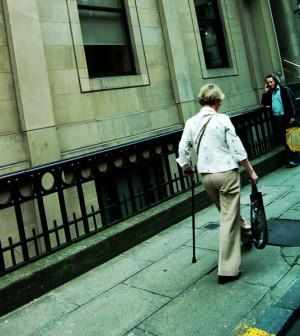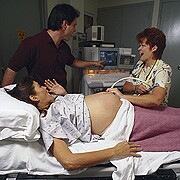- Double Mastectomy May Offer No Survival Benefit to Women With Breast Cancer
- Toxic Lead Found in Cinnamon Product, FDA Says
- Certain Abbott Blood Sugar Monitors May Give Incorrect Readings
- Athletes Can Expect High Ozone, Pollen Counts for Paris Olympics
- Fake Oxycontin Pills Widespread and Potentially Deadly: Report
- Shingles Vaccine Could Lower Dementia Risk
- Your Odds for Accidental Gun Death Rise Greatly in Certain States
- Kids From Poorer Families Less Likely to Survive Cancer
- Tough Workouts Won’t Trigger Cardiac Arrest in Folks With Long QT Syndrome
- At-Home Colon Cancer Test Can Save Lives
Study Ties Home Births to Higher Infant Death Rates


The number of pregnant women who elect to deliver their baby at home is increasing, but home delivery can lead to problems, researchers say.
The risk of a baby dying is nearly four times higher when delivered by a midwife at home than by a midwife in a hospital, according to a new study.
“Home birth is more dangerous,” said lead author Dr. Amos Grunebaum, a professor of clinical obstetrics and gynecology at Cornell University’s Weill Cornell Medical College.
These births don’t have the advantage of a hospital delivery, where immediate critical care is available if a complication arises, he said.
“There’s insufficient equipment and personnel available [in the home] to address complications,” Grunebaum said.
The results of the new study are scheduled to be presented Friday at the annual meeting of the Society for Maternal-Fetal Medicine, in New Orleans. The data and conclusions should be viewed as preliminary until published in a peer-reviewed medical journal.
Grunebaum said home deliveries are on the rise for a variety of reasons. “There’s a lot of hype around it,” he said. “Women want [fewer] interventions, and they want more homelike settings. Some women feel they don’t get this in the hospital.”
According to the U.S. Centers for Disease Control and Prevention, the number of home births increased 29 percent from 2004 to 2009. This increase was mostly among white women, and about one of every 90 births to white women are now home births.
Grunebaum said women should know the risks before deciding to give birth at home.
Stillbirth is one of the most common complications, he said. Stillborn babies are not breathing at birth, but with immediate care many of them could be saved.
“Women who are thinking about having home birth should know that if they deliver in the hospital with a midwife, it reduces infant death by 75 percent — and by 85 percent if the woman is having her first baby,” Grunebaum said. “These are babies who could be saved if they were delivered in a hospital.”
Another expert challenged the study’s findings.
Melissa Cheyney, a midwife and associate professor of medical anthropology at Oregon State University, said the study data was unreliable. “For low-risk women, birth at home with a skilled midwife is a safe option that also confers many health benefits for mother and newborn,” she said.
Grunebaum countered, saying, “This isn’t about midwives; it’s about birth settings.”
For the study, Grunebaum and his colleagues used CDC data on nearly 14 million births and deaths.
The researchers found that the absolute risk of a baby dying at birth or in the 28 days following delivery was 3.2 per 10,000 births when a midwife delivered the baby in a hospital, compared with 12.6 per 10,000 births when a midwife delivered the baby at home.
Moreover, if the home delivery was the mother’s first, the risk increased to 21.9 deaths per 10,000 births, the researchers found.
Each year, 18 or 19 more babies die during home deliveries than should, Grunebaum’s team said. With the increase in popularity of home delivery, the number of excess deaths could reach nearly 32 a year by 2016, they said.
Cheyney, however, said there are significant problems with using this data to study outcomes by place of birth.
“For example, U.S. birth certificates do not reliably track intended place of birth,” she said. “This means that between 10 percent and 25 percent of women who intended to deliver at home, but who transferred to the hospital during labor, have their outcomes erroneously recorded as hospital deliveries.”
“It is unreliable and potentially misleading to compare groups when such a high percentage of your sample cannot accurately be assigned to one group or another,” Cheyney said.
Although the study found a higher risk of infant death with home births, it did not establish a cause-and-effect relationship.
More information
For more about midwives, visit the American Pregnancy Association.
Source: HealthDay
Copyright © 2024 HealthDay. All rights reserved.










